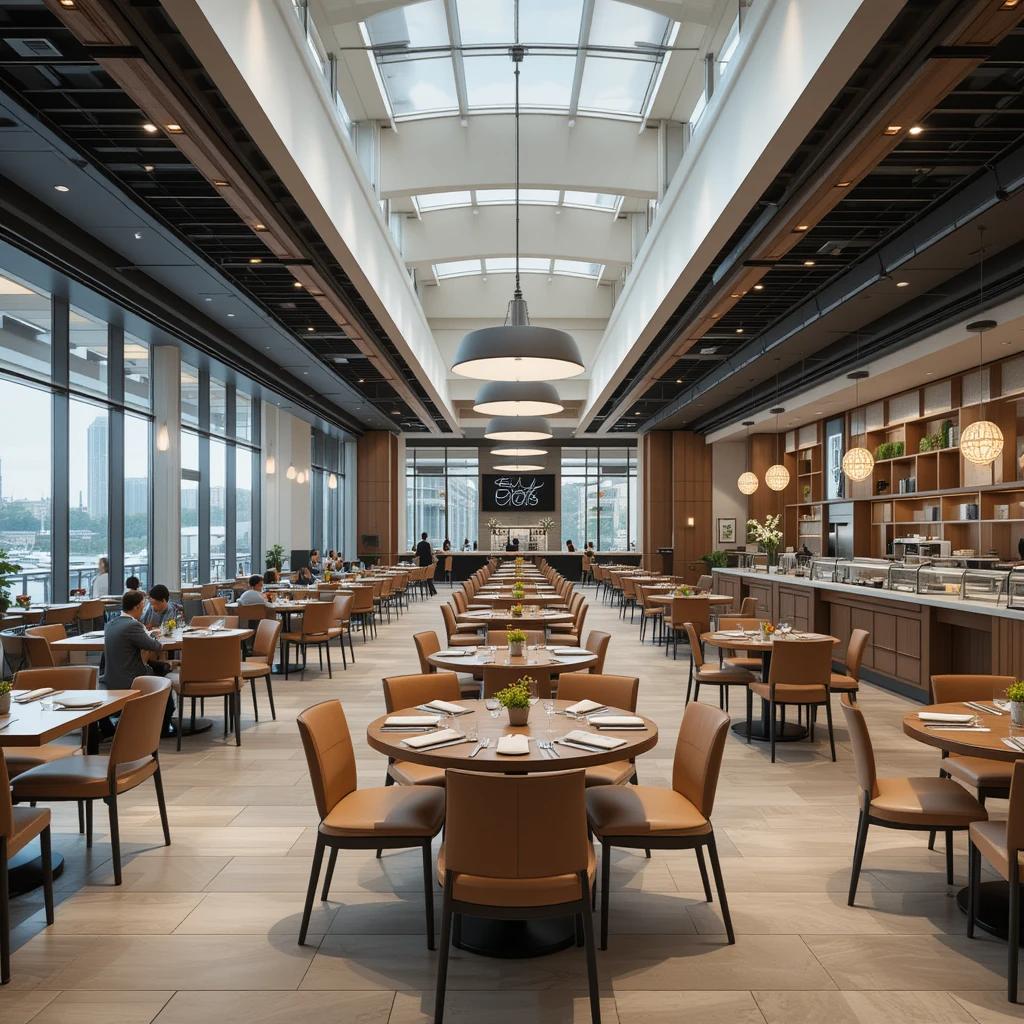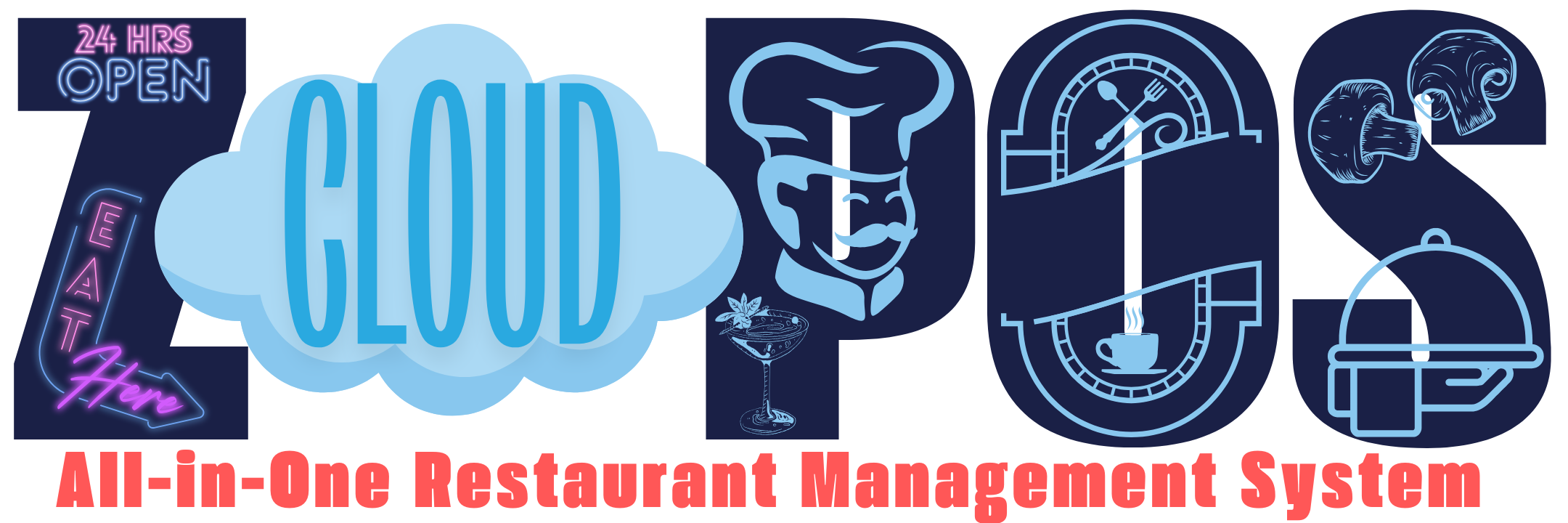
Streamline your corporate cafeteria operations with Z-Cloud POS, the ultimate cloud-based solution tailored for workplace dining spaces. Manage daily meal services with efficiency through features like real-time inventory tracking, customizable menus, and quick order processing. Z-Cloud POS supports multiple payment options, meal pre-orders, and employee discount programs to enhance convenience and satisfaction. With advanced analytics and reporting, you can monitor sales, reduce food waste, and optimize your cafeteria’s performance. Designed for busy corporate environments, Z-Cloud POS ensures smooth operations, helping you deliver exceptional service to employees and guests.
The Z-Cloud RMS system offers numerous features that can address the specific challenges faced by corporate cafeterias. These cafeterias often need to manage high volumes of transactions, provide diverse menu options, and handle internal billing and cost tracking. Here's a detailed look at how the POS system can assist:
Point of Sale and Transaction Management:
- Multiple Payment Methods: The system supports multiple payment methods, including cash, card, and other payment options. This allows for flexibility in accepting payments from employees and visitors.
- Multiple Counters: The system supports multiple counters, which can help manage high volumes of traffic during peak hours in a corporate cafeteria.
- Pre and Post Payment: The system allows for both pre-payment and post-payment options, accommodating different billing practices, such as employee meal plans or charging departments after the meal.
- Split Bill: The system can split bills, which can be useful for employees who may want to pay separately when dining with colleagues.
- SMS Integration: The system can send order confirmations or updates via SMS to customers, which can be helpful for busy employees who place online or take-away orders.
- Customer Display: The system can support a customer display, which can show transaction details or cafeteria promotions.
- Open and Close Register: The system allows for opening and closing registers, which is important for end-of-day cash reconciliation.
Inventory and Stock Management:
- Ingredient Management: The system allows for detailed management of ingredients, including categories, units, purchase, and consumption. This is important for managing the ingredients used in cafeteria meals and tracking costs.
- Stock Control: The system tracks stock, provides low stock alerts, and supports stock adjustments. This helps in managing both raw materials and ready-to-eat items efficiently .
- Low Stock Alerts: The system alerts staff when stock levels are low, ensuring that popular items are always available.
- Waste Tracking: The system tracks waste, which helps minimize losses, especially with perishable items in the cafeteria.
- Stock Adjustment: The system allows for stock adjustments, which is useful for accounting for discrepancies between physical stock and records .
- Stock Transfer: The system supports stock transfers between outlets, which is useful if the corporation has multiple cafeteria locations or a central kitchen.
- Product Management: The system allows for management of products that are sold as purchased from a supplier and require no preparation. This can be used for items like bottled drinks and other pre-packaged goods.
Food and Menu Management:
- Food Menu Management: The system allows for detailed management of food menus, which is necessary for the diverse offerings of a corporate cafeteria.
- Food Menu Category: The system allows the organization of food items into categories, which is helpful for a cafeteria with diverse offerings (e.g., entrees, sides, salads, beverages).
- Pre-Made Food: The system supports tracking of pre-made foods, such as sauces, dressings, or baked goods, which helps manage the stock and costs of these items.
- Item Variation: The system supports item variations, such as different portion sizes, which can help with managing different pricing points and costs.
- Combo Items: The system supports the creation of combo items which can be used to create meal deals.
- Modifier: The system supports the use of modifiers, allowing customers to specify extras, add-ons, or substitutes for their orders.
- Recipe Management: The system tracks ingredient usage and costs, which helps manage the cost of preparing cafeteria meals and standardizing recipes.
- Ingredient Consumption: The system tracks ingredient consumption when making food items, which can help manage costs in the cafeteria.
- Tax Settings: The system includes tax settings, which allows for the configuration of various tax rates if needed.
Kitchen Operations:
- Kitchen Panel: The system supports a Kitchen Display System (KDS), which provides real-time order information to the kitchen staff. This is useful for cafeterias that prepare food on-site.
- Category-Wise Kitchen Panel: The system can route orders to specific kitchen panels based on food categories, which is useful for kitchens with multiple preparation areas (e.g., hot food, grill, salad station).
- Real-time Order Status: The kitchen panel allows staff to update the status of orders, which is then communicated to the POS.
- Item Preparation Notes: The system allows the inclusion of preparation notes, which can help the kitchen staff with any special requests.
- Category Wise KOT Printer: The system allows the use of a category-wise KOT printer, which can automatically send orders to the correct printer in the kitchen based on the category if needed.
Customer and Order Management:
- Multiple Order Types: The system supports dine-in, take-away, and delivery options, which is useful if the cafeteria offers these options to employees.
- Delivery Management: The system provides delivery management, which allows for tracking and managing delivery orders if offered.
- Multiple Delivery Address: The system supports multiple delivery addresses for customers, this could be useful if the cafeteria offers delivery to different areas of the building.
- Self Order/QR Code Order: The system allows customers to place orders via QR codes, which can be useful for a self-service cafe section or for placing orders in a deli.
- Online Order: The system allows customers to place orders online, which expands the cafeteria's reach and provides convenience.
- Future Sales: The system allows adding orders for future processing, which may be useful for catering orders or pre-orders of meals.
- Loyalty Programs: The system supports customer loyalty programs, which can encourage employees to use the cafeteria regularly.
- Customer Profile: The system allows for storing of customer profiles, which is useful for tracking employee preferences and purchase history.
- Customer Due Tracking: The system allows for tracking of customer due payments, which can be useful for billing departments or tracking employee meal plan balances.
- Reservation: The system can handle reservations, which is useful if the cafeteria allows advance bookings for special events or meetings.
Reporting and Analysis:
- Comprehensive Reports: The system provides various reports, including sales, stock, profit/loss, and consumption reports, which allows owners to monitor performance and make informed decisions.
- Product Analysis Report: The system allows analysis of product sales, which can help identify popular menu items and optimize the cafeteria's offerings.
- Daily and Detailed Sales Reports: The system provides daily and detailed sales reports, useful for tracking revenue and trends.
- Consumption Report: The system provides a consumption report for ingredients, which can be useful for managing costs and minimizing waste.
- Profit Loss Report: The system provides profit loss reports for financial reconciliation.
- Register Report: The system provides register reports, which show transactions by payment method, useful for daily reconciliation at each point of sale.
- Z Report: The system provides Z reports for financial reconciliation.
- Business Intelligence Dashboard: The system has a dashboard that gives a quick overview of key metrics.
- Audit Log Report: The system provides an audit log report to track all changes and actions within the system.
- Low Stock Report: The system provides a low stock report, which is useful for managing inventory levels.
Additional Features:
- Employee Management: The system includes employee management with attendance tracking.
- Access Control: The system allows user management with access control, which enables configuration of user permissions based on roles (e.g., cashier, kitchen staff, manager).
- Offline Sync: The system continues to operate without an internet connection, ensuring uninterrupted service.
- Software Updates: The system has a software update feature to keep the software current.
- Multiple Outlets: The system can manage multiple outlets, which allows a corporation to manage multiple cafeteria locations from a single system.
By utilizing these features, corporate cafeterias can streamline their operations, manage inventory and food costs effectively, handle employee needs efficiently, and enhance the overall employee dining experience. The Z-Cloud RMS system provides a comprehensive solution for managing all aspects of a corporate cafeteria, from point of sale to back-office operations.
To discuss more about your requrnements Contact Us
